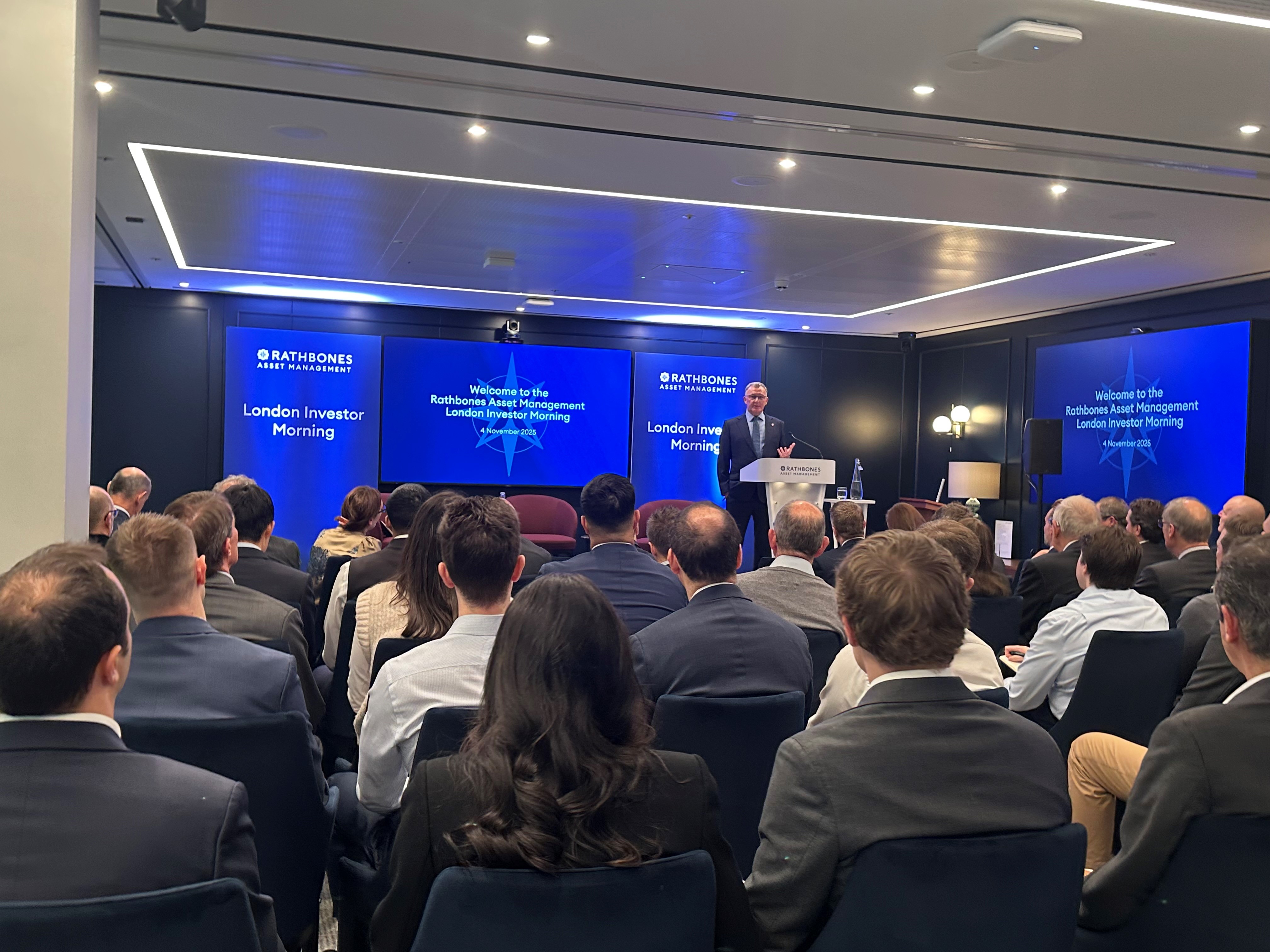Actively seeking diversification in a frothy market
As concerns about the value of the AI-heavy US stock market mount, there are plenty of exciting areas where investors can diversify. Head of discretionary and global financial institutions Sam Collett rounds up our inaugural Investor Morning.

The legacy of the last epochal technology breakthrough – the internet at the end of the 1990s – is chiming with the AI boom of today. But there are as many differences as there are similarities.
Speaking as host of the inaugural Rathbones Asset Management Investor Morning, Bloomberg columnist and podcaster Merryn Somerset Webb said one of the lessons she took from the dotcom crash and the tough slog that followed was that clear-eyed, experienced active managers can help mitigate the pain of a downturn and find opportunities when others are too preoccupied with keeping hold of their shirts.
Merryn says: “We’re in the middle of a regime shift from one of low inflation and interest rates, peak globalisation and the peace dividend to higher yields, refired inflation and changing geopolitics. Much of this isn’t yet being reflected in markets, which makes it a hard environment to invest in, because you know some day it will be.”
Our fund managers noted the risks while also highlighting the opportunities that are on offer in the market. A theme running through the presentations was the risks stored up by increasingly concentrated markets, exacerbated by the indomitable flow of passive – and rapidly rising retail – flows.
To boldly go, where everyone else is going …
Rathbone Global Opportunities Fund manager James Thomson says there are dangers lurking under the surface of the index. While almost 60% of the US stock market by value is tech or tech-related, about 40% has been dubbed AI or AI-adjacent. Many of these stocks will turn out to be masquerading, James says.
Meanwhile, a quarter of all funds launched this year have been leveraged single-stock ETFs. There are roughly 600 leveraged equity ETFs globally, according to Morningstar Direct, up 30% in less than a year. About 40% of the 2025 US stock market returns came from just five stocks, while half of the S&P 1500 have lost money year to date.
“All of this equates to a warning that the market isn’t interested in diversification right now,” James concluded.
That doesn’t mean there aren’t quality US AI companies that are great investments – including chip designer Nvidia and cabling and connectors supplier Amphenol, which James has held for years. But that there’s a rapidly growing cohort of speculative stocks that can’t back up the hype with expanding profits.
James said, “Last time it was, ‘Build it and they will come.’ No one came. It’s not the same this year: a 40% increase in AI capacity is immediately soaked up by the market.”
Meanwhile, Rathbone Fixed Income Fund manager Stuart Chilvers showed why fixed income markets are a terrible place to invest passively. Indexing simply pushes you toward the most indebted companies, skews your duration the wrong way (shortens it when yields are high and lengthens it when yields are low), forces you to buy and sell corporate bonds at the worst times, and can expose you to almost 10% haircuts on assets when flows reverse in panicked sell-offs. It also prevents bond managers from doing what they do best: reading through novel-length indentures and using their knowledge and experience to find arbitrage opportunities, irregularities and good trades that are niche (to put it politely). Index-hugging also means not side-stepping obvious traps: “The third-biggest sector in UK corporate bonds at the beginning of last year? Water companies. And the issues with these weren’t unknown. But passives were forced to hold all of them.”
The benefit of buying where others don’t look
Another thread running through the event was a disconnect between perception and reality.
In a world where stock prices tend to rise simply because their brand is in the news or social media feeds, our managers set out the stall for under-owned and overlooked assets that offer fantastic value. Head of global emerging market equities Tim Love and fund manager Joaquim Nogueira noted how little exposure most portfolios had outside developed markets. That’s despite a radical shift in the quality of the businesses that can be found in emerging markets.
“It’s the perception versus the reality,” Tim said. “They’re not the old natural resources and state-owned enterprises anymore. Now they are tech leaders and innovators. There are high-quality, fast-improving emerging market stocks that are outcompeting Western counterparts, yet priced at stark discounts.”
Meanwhile, with all eyes on the US and the dizzying investments in AI and the infrastructure to support it, the UK market has all been written off. Yet despite downbeat vibes and a government adrift, the FTSE All-Share is one of the best-performing advanced world markets year to date, points out Rathbone Income Fund manager Alan Dobbie. At more than 20%, its total return is the second best in the last 30 years (2009 pipped it by a whisker).
Rathbone UK Opportunities manager Alexandra Jackson said the stellar UK stock market gains have been driven predominantly by the large companies at the top of the FTSE 100. That could be because of the noticeable rise in investment flows into the UK from overseas, particularly the US. “Mid-caps are poised for a catch-up, and providing it helps cool inflation, the upcoming UK Budget could be the catalyst they’ve been waiting for,” Alexandra argues.
“For investors looking to diversify away from the US, the UK might just be the opportunity they haven’t missed yet.”



